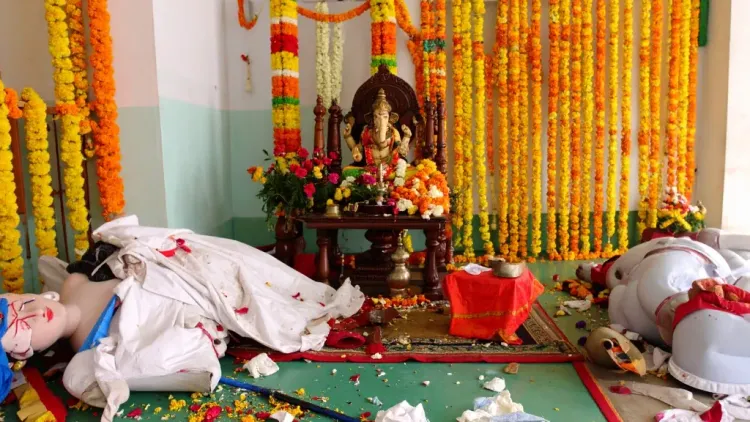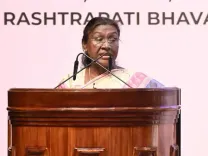What Happened to the Idols Vandalised in Coimbatore?

Synopsis
Key Takeaways
- Idols of Lord Ganesh and others were vandalised.
- Police initiated an investigation immediately.
- Community unrest may arise if culprits are not punished.
- Coimbatore has a history of communal conflicts.
- Enhanced security measures have been implemented.
Coimbatore, June 18 (NationPress) Tension gripped Coimbatore district after unknown vandals defaced idols at two temples located on Avinashi Road near Chinniyampalayam.
As per police reports, the idols of Lord Ganesh, his vehicle Mushak, the chariot of Lord Ganesh, as well as Rahu and Ketu, were discovered damaged at both the Plague Mariamman Temple and the adjacent Sakthi Vinayagar Temple on Wednesday morning.
The temples, established several decades ago, sit next to one another on government land and lack CCTV surveillance. Drivers passing through the area noticed the damage and quickly notified the Sulur police, who arrived promptly and commenced an investigation.
A specialized team has been assembled to track down and apprehend the offenders. Preliminary investigations indicate that the idols were struck with stones during the night. This incident has sparked strong reactions from local residents and religious organizations.
A group of right-wing activists gathered at the temple sites on Wednesday morning, urging immediate and severe action against the perpetrators. They cautioned that unrest could follow if the culprits are not swiftly identified and punished.
Given Coimbatore’s volatile communal history, the vandalism has raised alarms among law enforcement. Senior officials have been dispatched to oversee the situation and uphold law and order.
It is important to note that Coimbatore has a history of communal strife.
On February 14, 1998, a series of coordinated bomb blasts devastated the city, resulting in 58 fatalities and over 200 injuries. These attacks targeted 11 locations, including busy urban areas.
More recently, on October 23, 2022, a car bomb explosion occurred near the Arulmigu Kottai Sangameshwarar Temple, leading to the death of 27-year-old Jameesha Mubin, later identified as a suicide bomber.
The National Investigation Agency (NIA) took over the investigation, uncovering that Mubin had intended to detonate the bomb in a crowded market during Deepavali celebrations.
However, the explosive detonated prematurely near the temple. Follow-up investigations resulted in the arrest of 17 individuals linked to radical Islamist ideologies. NIA reports confirmed that Mubin had pledged allegiance to ISIS’s former leader, Abu Al-Hasan Al-Hashimi Al-Qurashi, with plans to attack non-believers.
This conspiracy allegedly originated during secret meetings at the Viyyur High-Security Prison and Sathyamangalam Reserve Forest.
Investigators suggested that the motive was to avenge the arrest of Mohammed Azharuddin, a radical preacher detained in 2019 for inciting violent jihadist ideologies in Coimbatore.
With the idol desecration occurring against this backdrop, both state and central intelligence agencies have initiated a coordinated investigation to avert any communal unrest. Additional security measures have been implemented in the area as a precaution.





